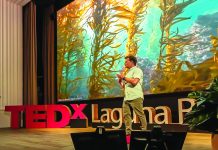A group of Three Arch Bay neighbors are watching a nearby aerie, 40 feet above the ground, with hopeful anticipation for signs that a pair of peregrine falcons that nested there last Spring will soon return to the rock ledge.
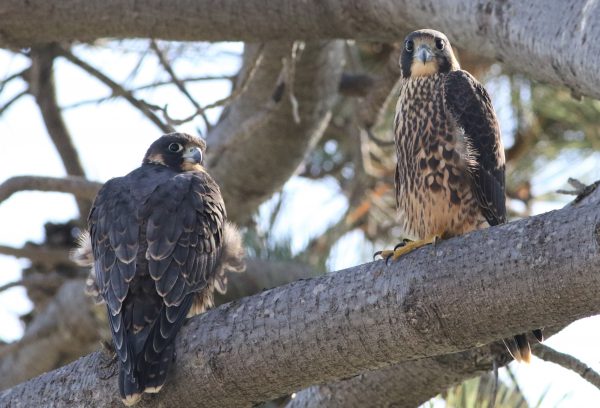
Wildlife photographer and Three Arch Bay resident, Nancee Wells, spends hours each day sitting on local beaches and rocks observing bird life and waiting for the perfect shot. As soon as she spotted the pair of falcons near her home, she began taking photographic notes, learning their courting and mating rituals and alerted her neighbors of their presence.
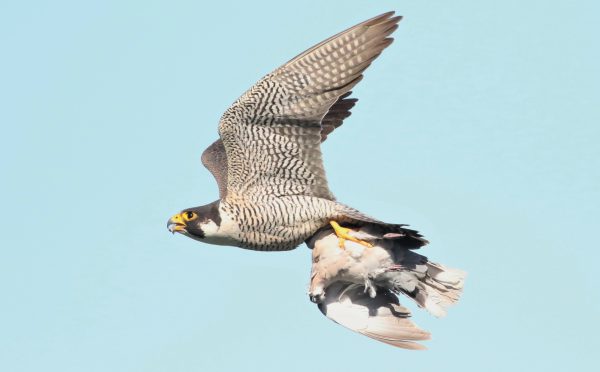
“They speak a different language when they start breeding,” said Gail Waters, a 49-year resident of Three Arch Bay with a prime view of the aerie from her home overlooking the bay. Waters has learned that the falcons each have their preferred branch in the large Torey Pine outside her door.
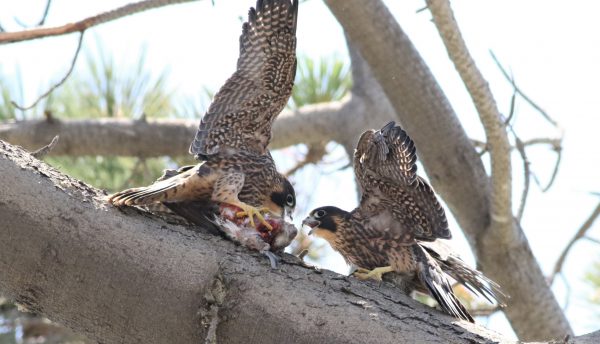
According to the National Wildlife Federation, peregrine falcons were at risk of becoming extinct in the United States and Canada for much of the 20th century. They were dying off and breeding pairs were unsuccessful, the NWF’s website says, due to the use of pesticides, specifically DDT sprayed on farmland.
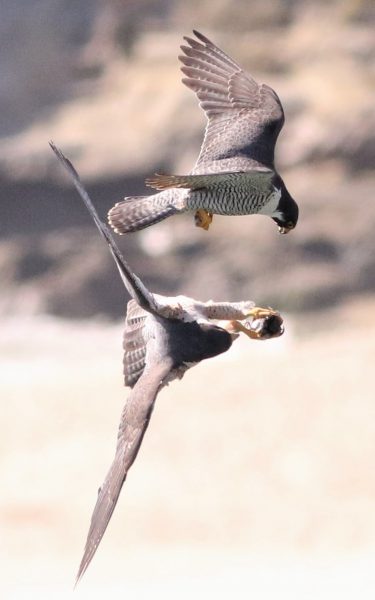
Wells, a self-described naturalist, shared her discovery of the raptors with Bernice Villanueva, the natural resources protection officer for the City of Dana Point. “Nancee acts a field docent for us,” said Villanueva, who manages the Dana Point Headlands Conservation Area and the city’s Interpretive Center. Villanueva said Wells’ photos and notes are a valuable addition to the comprehensive natural resources data she and her team collects.
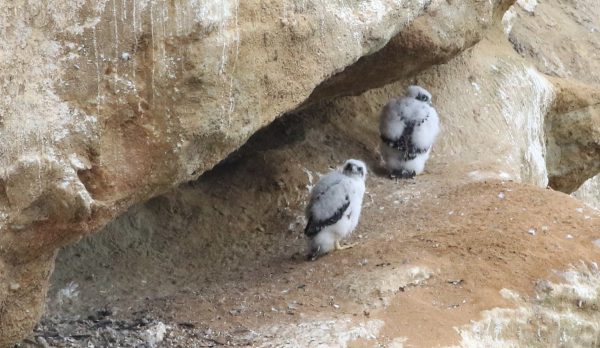
Although DDT was banned by the Environmental Protection Agency in 1972, the Los Angeles Times reported in 1985 DDT had turned up in Newport Bay and in sediment in San Diego Creek’s network of feeder channels that serve the single largest agricultural area in Orange County.
The chemical makes its way into the food chain of peregrine falcons, who are top predators, absorbing it from their infected prey—fish and smaller birds, Wells said, referencing the DDT-laced water discharged in sewage lines operated by Los Angeles County nearly three decades ago and reported in a 1992 Los Angeles Times article.
Although she claims not to be a birder, Waters said she has also noticed osprey, puffins, an eagle and herons from her living room where she keeps a camera with a “big lens” set up. “You get to understand them when they’re right under your nose,” she said of the falcons.
Peregrine anatum, the scientific name for the “Monarch Pair,” as they’re referred to, do not migrate Wells said. “They protect their territory, and when it’s time for the chicks to leave the nest, their parents stop feeding them and then they have to go and find their own territory,” she added.
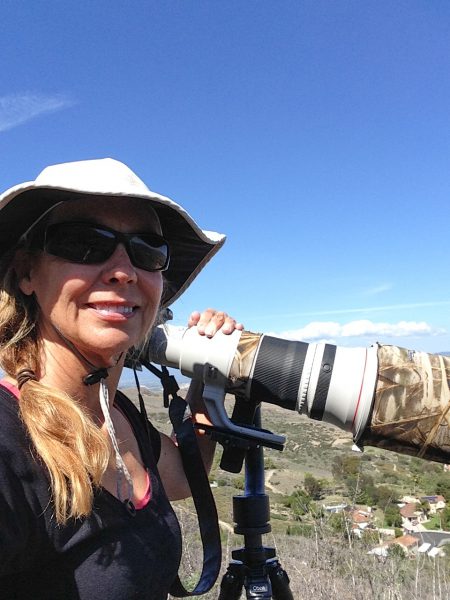
Last summer, Wells made careful observations of the activity in the nest below her home. After three eggs were laid at the beginning of April, the chicks hatched 33 days later. “You know they’ve hatched when food starts going in to the nest,” she said, adding that the chicks could be heard “screeching for food” at 5:30 a.m.
The eyasses, or babies, stay in the nest for five to six weeks, during which time they’re taught to catch medium-sized birds in flight by making swift dives called stoops. From over a half-mile above the ground, a peregrine can reach speeds of 200 mph as it drops down on its prey.
The “Monarch Pair’s” fledglings left the nest on Father’s Day, said Wells, who had noticed them practice flapping their wings at the edge of aerie for a few days prior to June 16.
Jane Hanauer, another neighbor, has also been watching the falcons’ activities on the promontory between her house and lower Three Arch Bay. Their presence has had a “big effect on the sea gull population,” she said, calling their reduced numbers “a side benefit.”
The Monarch Beach Resort in Dana Point and the Montage Laguna Beach each employ falconers with raptors trained to deter, but not kill the seagulls that fly over on their grounds.
While federally protected, wild peregrine falcons are no longer an endangered species. Another mating pair has been spotted in Dana Point.



